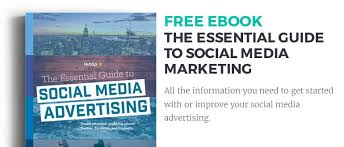5 Steps to Create a Social Media Marketing Strategy in 2022
How to Make Your Social Media Marketing Strategy?
In our Digital Marketing Case Studies post, we have mentioned a 5 step strategy that we use to create profitable social media campaigns for our customers.
And we said comment and let us know if you would like to see a post explaining those 5 steps.
7 Ways to Increase Facebook Engagement
Well, you guys tell us!
So today, we are breaking down those 5 steps you took as a professional digital marketing agency to create an effective social media marketing strategy for your clients.
let's get started!
Step 1: Researching competitors and customers
Step 2: Content development and development strategy
Step 3: Implementation of the Content and Follower Strategy
Step 4: Measure and Report
Step 5: Customization Lifecycle
Step 1: Researching competitors and customers
This is arguably one of the most important steps in creating a social media marketing strategy as it lays the foundation for all the other steps.
If you don't take the time to truly understand your audience and your competitors, the rest of the 4 steps won't matter.
So let's start researching customers.
Most business owners know the general demographics of their audience, such as U.S. businesses interested in non-toxic living,
But the problem is that a lot of business owners stop there. They leave their customer avatar on it.
If you want to understand what is going to drive your audience to buy from you, you have to go much deeper than that.
Once you understand not only what people buy but your specific target market to buy from you, the world of marketing opens up into a money-making machine.
This is something that we cover in-depth in our target marketing example post, so we would strongly recommend you to read further to help you through this step.
Because then, if you're not completely here, the rest of your marketing strategy won't work.
But for the sake of this post, we'll quickly break down what we look for when researching a target market.
We want to determine their goals and their pain points as they relate to marketing the product or service.
A lot of mistakes business owners make when thinking about this move, have them say to themselves, "Oh, customers will be tempted to buy from us because our products are cheaper than our competitors." !"
Yet, is financial planning your crowd's objective or trouble spot? Maybe they actually value quality or ethically sourced products more than price.
In this case, you won't have a selling point from having a cheaper product.
Social media marketing trends and predictions for 2022
One example we share in our target marketing example post is a women's clothing business that explores its target market, not just women, but especially tall women.
In that example, customer pain points include things like never being able to:
jeans that are too long,
sweaters with sufficiently long sleeves, or
Cute shoes that have low heels.
In that situation, your advertising ought to straightforwardly address how your dress settles these issues.
And not about how you got featured in Vogue or how you're driving sales this week.
A sale or discount is a great retargeting strategy to push someone who's already invested in your brand to make a purchase.
But for someone who is 5”10, you won’t capture their initial attention by marketing your business with discounted language.
You are going to attract their attention with the long shape and tall insects.
So the call-to-action for you with this step is to write down any potential pains or pain points that your target market may have you can think of.
Think about what problem they are trying to solve or what aspiration they are trying to achieve that makes them want to buy what you are selling.
Make a list of any possible answers and guide them through the rest of your marketing campaign.
Later, if at any point, you get stuck on what kind of reel to post on Instagram or what caption should be on a Facebook ad…
...you can just stop and ask yourself what caption, video, image, or anything helps the audience to solve their problem.
Twitter Ads: 4 Ways To Crush Tweets in 2022
Or, round up their goal from the list you made.
We're going to move on to the second part of this phase, researching competitors but remember after this post, go back and read that target marketing example post we mentioned because we are telling you, it will help with customer research.
As for competitors, you'll want to create a list of the following for your social media marketing strategy:
direct competitor,
indirect competitors, and
related accounts.
Direct competitors are companies that sell a similar product or service to what you do.
Indirect competitors are companies that may not sell the same product or service as you, but they solve the same problem.
So you might still be losing customers to them, like restaurants versus grocery stores, for example.
And related accounts are not really competitive.
But those are the only groups, pages, or Instagram accounts that are topic-focused, and the topic is related to what you sell.
For example, if you sell ice skates, a related account would be an Instagram account that teaches ice skaters how to do different jumps.
Once you've got a list of your competitors, you'll want to go through their social media accounts and look for these things:
his followers,
the type of content they post, and
About the content, those topics get the most and least engagement.
Doing so will help show you what kind of content your shared target market is responding to best on social media.
How to Dominate 2022 with Social Media Marketing on Facebook
It will also help you to set some goals if your competitors have a really strong social media presence.
You obviously want more followers and better engagement than your direct competitors.
So if they're doing well, you have some of your first numerical goals set.
If they're not doing well, either:
Do you really want to track down other direct contenders to investigate, or
You have landed on a gold mine in the sense that your target market is wide open to taking this position.
Once you have completed your customer and competitor research, it is time to move on to the next step.
Step 2: Content development and development strategy
In this step, you have to determine which platforms you want to start with, and how you are going to grow on those channels.
To decide which social media platform to start with, you need to choose the one that has the most amount of exposure to your target demographic.
So you'll need to do a little research on each platform's user base to see which ones you're looking for.
Or, you can read our social media platform for a business post where you can learn more about it.
Content Marketing Types Once you've chosen the top 1 or 2 platforms you want to start with, you need to put together a content and development strategy.
That's because it doesn't matter how much content you publish if no one is seeing it.
The research you did in Step 1 will help you determine what type of content to create, both in format and topic.
And we usually like to summarize this information with a 5-subject to the topic map.
The development system will appear to be unique relying upon the stage.
On Facebook, it can be a page like ads, on Instagram, it can get crazy reach with reels.
You can explore more of our blogs to help you get started with a growth strategy for whatever social platform you want to get started with.
Step 3: Implementation of the Content and Follower Strategy
The next step in creating your social media marketing strategy is to implement aka put all your plans into action.
This is the stage where you start doing everything we've talked about so far.
Tips For Using Facebook to Promote Your Business
This could be publishing organic posts 5 times a week, running Facebook ads, starting a TikTok account, setting up your Instagram shop, etc.
Whatever plan you came up with as a result of Steps 1 and 2, it's time to do it.
Now, it's worth noting that there are tools to help you perform any social media task you can think of.
And you, as a small business owner, should definitely take advantage of them, especially if you don't have a marketing team like LYFE working for you.
So here's our post on digital marketing tools for small business owners, if that's something you'd like to take a look at.
Now that you've been executing your social media marketing strategy for about a month, it's time to move on to Steps 4 and 5.
But first, before we get into it, be sure to check out our new social media advertising training course to help you master social advertising.
Step 4: Measure and Report
After at least a month of starting your social media marketing strategy, you need to start assessing how everything is going.
Instagram Growth Analytics How many followers did you gain in the last 30 days? How was your engagement?
Which subjects seem to have worked well and which did not?
What was it about the posts or advertisements that functioned admirably?
You can start determining these things by looking at the native analytics available on social media platforms.
Or, by linking your account to a third-party analytics platform.
Once you have written down some of these numbers, you can proceed to the last step.
Step 5: Customization
You want to pivot and optimize your current efforts based on what the data is telling you.
If people start responding more to Instagram reels than static image feed posts, maybe start posting more reels in the next month!
If the posts with the highest engagement are focused on a certain pain point, perhaps explore more topics around that pain point in the next content calendar.
We have just 2 words of caution here.
The first is that you want to test things slowly in a way that is measurable and trackable.
The best way to do this is with A/B split testing, which you can learn more about in our Facebook Ads Testing post if you're not already familiar.
And second, make sure you're setting realistic goals. You cannot expect to go from 20 followers to 10,000 in the first month.
And so, you don't want to change your entire strategy just because you haven't hit an unrealistic benchmark.
We have a great post on how to set strategic social media goals, so be sure to read this next one.
But otherwise, that completes our 5 Steps in Creating a Social Media Marketing Strategy!
Plus, if you need any help with your social media marketing, don't hesitate to contact us today!











.png)
0 Comments